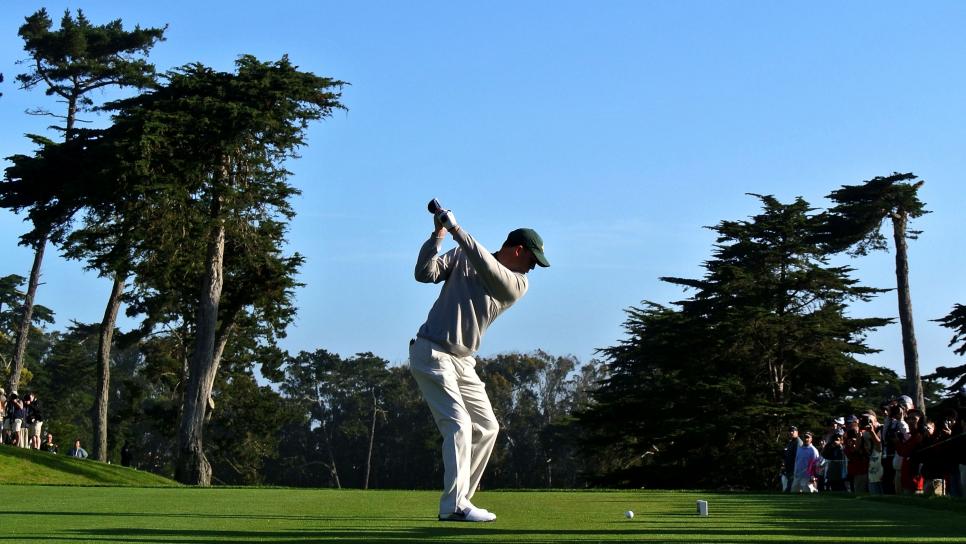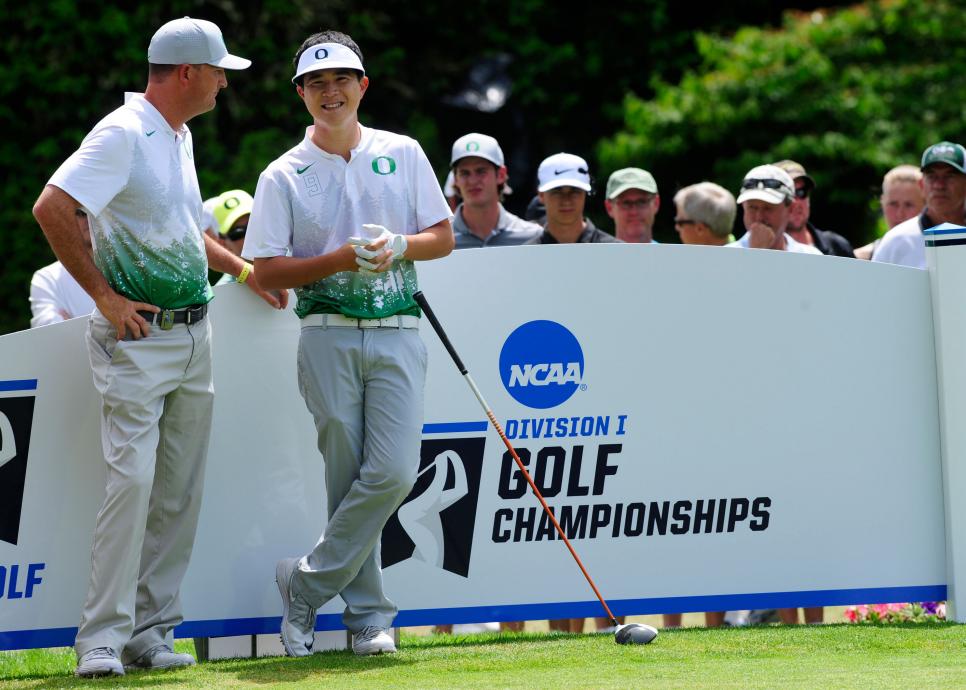Andrew Redington
Casey Martin drives a golf cart off the first hole during the first round of the 2012 U.S. Open at The Olympic Club.
By Max Adler
Casey Martin is in recovery at the Mayo Clinic in Rochester, Minn. His right leg, or his trail leg as he’s known it in his life as a golfer, was amputated above the knee in a three-and-a-half-hour surgery the afternoon of Oct. 15. That infamous leg afflicted with a circulatory disorder since birth, that won a national championship alongside Notah Begay at Stanford in 1994, that made the Supreme Court debate the essence of competitive golf, that made Jack Nicklaus reluctantly testify against carts, that qualified for two U.S. Opens, that sometimes made him cry getting in and out of the shower, will bother no one anymore.
The night before the surgery, doctors couldn’t say how high they would have to cut. With Klippel-Trenaunay syndrome, the potential for excessive bone-bleeding and other complications from amputation are serious, even fatal. And they just wouldn’t know what they could do until they went in.
“The doctors prepared us for the worst-case scenario,” said older brother Cameron, who with their father is at the clinic. “But the report is [the doctors] feel it went well, as they were able to save as much of the bone above the knee as they had hoped. This should give him a good shot at a prosthesis that will be effective.”
Martin broke the leg two years ago. Roadwork outside his house, retrieving the trash bins at night in the dark, the curb suddenly eight or 10 inches lower than his motor skills remembered. Precisely the sort of accidental step he avoided by driving a cart his lone full season on the PGA Tour in 2000. Despite two years in a cast and a series of injections of the kind more commonly used to treat the old bones of osteoporosis, the tibia never healed.
“In many ways I exceeded what my doctors told me as a kid,” Martin told me two weeks ago about his decision to go forward with the operation, a version of a conversation he’s been having quietly for months with those close to him, including an emotional team meeting with his players at the start of the University of Oregon Ducks men’s fall golf season. “I always felt this would be my destiny. So while it’s weird to be here now, about to become seriously disfigured, it’s not unexpected.”

Andrew Redington
Casey Martin hits a tee shot during a practice round at the 2012 U.S. Open.
The coming months will be gruelling for Martin, whose surgical wound must heal before he starts the difficult process of finding and fitting a prostheses. Maybe the personal ordeal of his last two years has girded him for it. In his 15th and 16th seasons as head coach of the Ducks, he has struggled with crutches at practices, through airport security on recruiting trips, up and down the stairs of unfamiliar clubhouses, to and from rental-car centres, everywhere. The lighter travel schedule imposed by the pandemic was a blessing, but not entirely. As he watched his Ducks fall from the level of their national- and conference-championship seasons of 2016 and 2017, he also moved out of his house because of divorce. His main respite has been regular visits to the driving range, where he could hobble from a cart to a pile of balls and still, amazingly, stripe 8-irons for 30 minutes, the broken leg held firmly in place by an ExoSym cast. He “lived on Aleve” out of fear of addiction to painkillers that actually work.
“I’m a stack-and-tilt golfer times a thousand, all my weight on my left side,” Martin said on the range at the Colonial Collegiate Invitational in Fort Worth, his last event as active head coach, where the Ducks finished 13th out of 15 very strong teams. “It’s been a heavy period. But I can laugh about it, thankfully.”
As Martin recovers, assistant coach, longtime friend and 2000 U.S. Amateur champion Jeff Quinney will take over leading the Ducks.
“Although I’ve only been here a short while, I think Casey trusts me to continue what he’s established with the kids, that passion for enjoying the grind of getting better,” Quinney said. “I don’t think any of us can honestly know how much pain he’s been going through. But he’s never once complained or looked for sympathy. Hopefully in the not-too-distant future his day-to-day activities will become a little easier.”

Steve Dykes
After his PGA Tour career, Martin took over as men’s coach at Oregon, leading the team to an NCAA title in 2016.
It will be some time before Martin figures out how he can walk again. Yet the prospect of playing better golf, even tournament golf, with a prosthesis is a dream he has acknowledged. Martin said he was playing some of the best golf of his life immediately before he broke his leg. He turns 50 this June.
“He still makes that special sound of compressing the ball that you notice going down a range,” Quinney says. “Who knows, he might be in a great mental place. He might just be free to let it go.”
But for now, Casey Martin is just happy to be alive.









